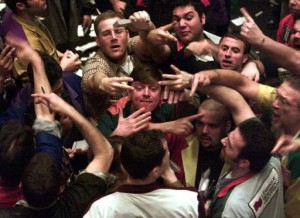Today was a great opportunity to witness the raw power of stampede for the exit on a stock. Focus Media Holding was at the centre of a report released by controversial investment firm Muddy Waters alleging fraudulent business practices. This is the same company that has made headlines in the past by obliterating stock prices of the companies they feature. Because Muddy Waters usually sells short (e.g. they take a bet that a stock is going to fall in price) many of the names they feature, if the stock drops they stand to profit.
While not illegal, it is controversial. Muddy Waters has exposed several cases of improper or fraudulent activity from Chinese companies listed on American and Canadian stock exchanges (such as Sino-Forest – to read more click here). While some of these claims have turned out to be true, others have been refuted. Regardless, what happened today with a stock price losing over 50% of it’s price in less than 30 mins in the middle of the trading day is not something you typically get a chance to see.
Even though the video does not have sound you can see how quickly the prices fall (this video catches the sell off into the day low) and that anyone trying to get a “bargain” at $12 ends up having to ride this stock well down underneath $10 and not really knowing how much further things will go. This kind of falling stock is usually called a “falling knife” because even though the price is dropping, trying to catch it on the way down can be very dangerous. One of the scariest moments if you own/trade a stock is when the stock exchange intervenes and halts trading activity because it’s really anybody’s guess as to what happens next. Luckily for FMCN shareholders this halt was lifted and trading resumed about 10 minutes later only to be halted another time as the price rose dramatically from the day low.
The take home lesson: even if you do your homework on a stock, there are opinions out there that can move the perception on what something is worth. When opinions go negative though, the results are often dramatic, emotionally driven drops in price and stampedes for the exit. Markets always try to “price in” (i.e. factor in the ‘cost’ ) certain scenarios and this video shows you how fast and volatile that process can be. Enjoy!

